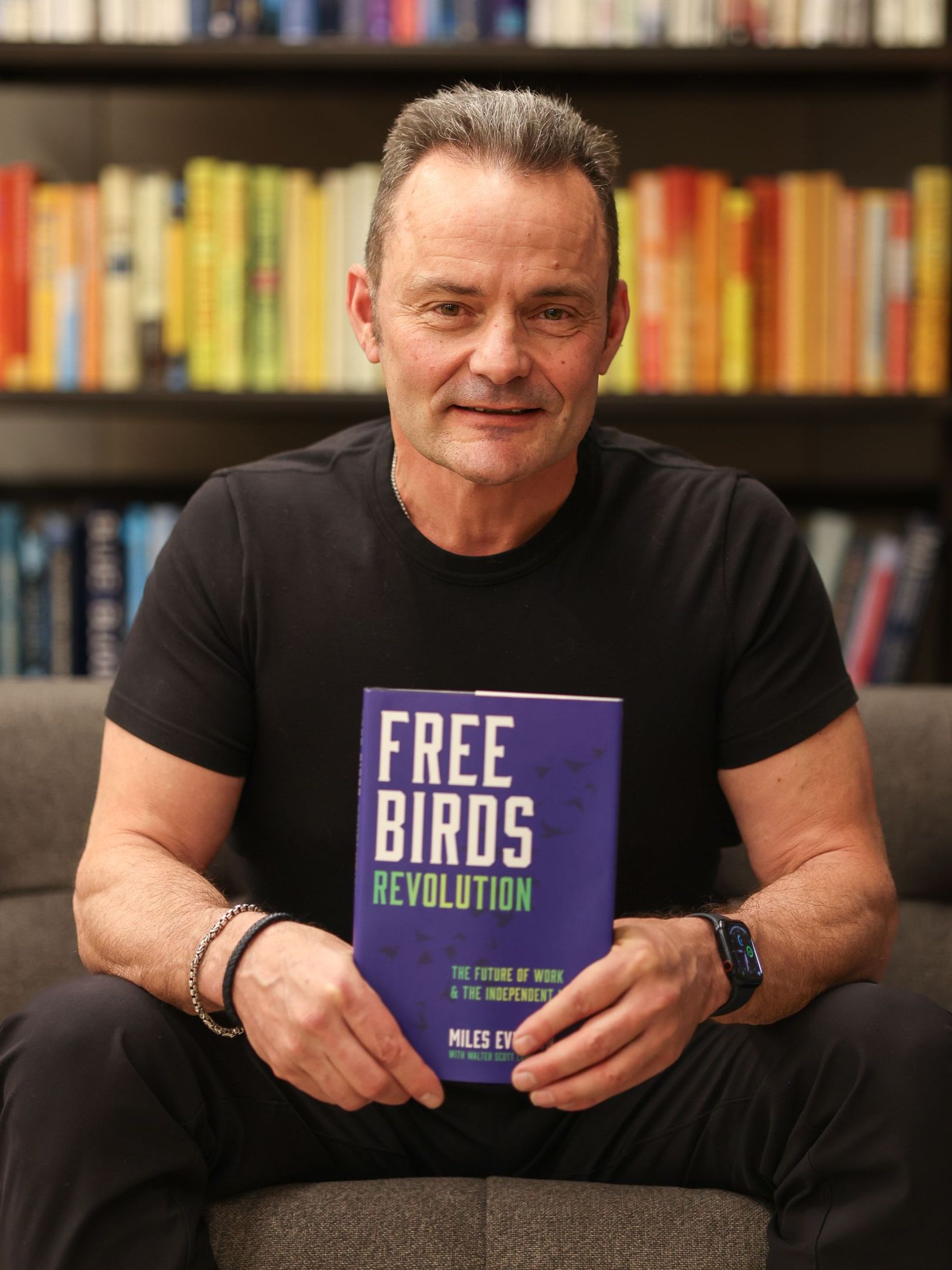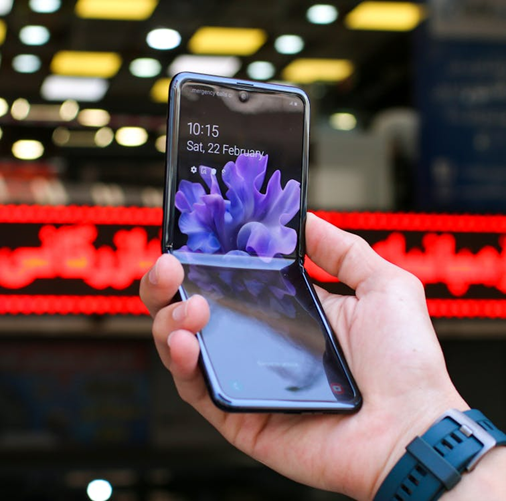Phones that BEND without breaking? Check out this smartphone brand's game-changing innovation!
| From the desk of Miles Everson: Happy Tuesday! Welcome to “Return Driven Strategy (RDS).” I hope you’re having a great day so far. RDS is a pyramid-shaped framework with 11 tenets and 3 foundations. When applied properly, these principles help businesses achieve their organizational objectives. Today, we’ll continue talking about the application of this framework in this particular business’ strategy. Read on to learn more. |
Phones that BEND without breaking? Check out this smartphone brand's game-changing innovation! Imagine carrying a pocket-sized device that LITERALLY unfolds into a full-screen tablet, seamlessly blending convenience with cutting-edge technology. —a device that pushes the boundaries of what a smartphone can do, redefining portability without compromising on screen size. Sounds futuristic, right? Well, this is no longer the stuff of science fiction—it’s Samsung ’s reality
When Innovation Meets Market Demand As a global technology leader, Samsung has consistently pioneered advancements in the smartphone industry. In 2019, the company introduced the Galaxy Fold , marking a significant leap in mobile technology. The inspiration for this? Addressing the growing consumer demand for larger screens while maintaining portability! By bridging the gap between smartphones and tablets, Samsung set out to revolutionize user experience. You see, the smartphone market has long been dominated by the traditional slab design, with only incremental improvements in camera quality, processing power, and battery life. However, consumer needs have evolved. With the rise of multitasking, mobile gaming, and media consumption, users began seeking a more versatile device. Samsung recognized this demand and saw an opportunity to disrupt the status quo by introducing foldable technology. It was a bold move that required significant investment and engineering breakthroughs. So, how did Samsung set out to achieve this? Becoming the first company to introduce folding technology was no small feat. Samsung heavily invested in research and development (R&D), collaborating with materials science companies to create flexible display technology. To create foldable displays, the company had to develop new materials that could withstand repeated folding without degrading. Samsung’s ultra-thin glass (UTG) became a game-changer, offering the flexibility of plastic with the durability of glass. Additionally, the company engineered a unique hinge system that prevented dust and debris from damaging the delicate folding mechanism. These technological advancements ensured that foldable smartphones could deliver long-term usability, addressing one of the primary concerns of early adopters. What else? Strategic marketing played a crucial role in Samsung’s success! The Galaxy Fold, followed by models like the Galaxy Z Fold and Z Flip , was positioned as a premium product for tech enthusiasts and high-end consumers. Moreover, Samsung partnered with app developers to optimize applications for foldable screens, enhancing usability and driving adoption. By working closely with Google and other developers, Samsung ensured that popular apps such as YouTube , Microsoft Office , and social media platforms could seamlessly transition between folded and unfolded modes, maximizing the foldable experience. There’s more… Continuous feedback from early adopters also fueled refinements in subsequent models, demonstrating a commitment to innovation. With each new iteration, Samsung addressed concerns related to durability, screen creases, and user interface improvements. As a result of this iterative approach, the company was able to build trust and credibility in the market, ensuring that foldable smartphones were not just a passing trend but also a lasting innovation. Samsung’s Foldable Smartphones As Seen Through the Lens of Return Driven Strategy’s (RDS) Tenet 5 As stated by Professor Joel Litman and Dr. Mark L. Frigo in the book, “Driven,” Tenet Five of RDS— Innovate Offerings —underscores the importance of innovation to adapt to market needs. Samsung’s foldable smartphones epitomize this principle, combining the functionalities of both smartphones and tablets to meet consumer demands for versatile devices Through advancements in both hardware and software, Samsung maintained a competitive edge in an industry saturated with similar products. … and by merging state-of-the-art technology with practical consumer benefits, the company attracted tech-savvy buyers and high-income users, reinforcing its dominance in the smartphone market. This level of innovation also aligns with the principle of sustaining competitive advantage. After all, the smartphone industry is notorious for rapid changes and intense competition. By focusing on foldable technology, Samsung differentiated itself from rivals like Apple and Huawei , establishing a unique value proposition. While other brands continued refining existing designs, Samsung boldly ventured into uncharted territory, setting a new industry standard. The result?
Clearly, this success solidified Samsung’s position as a pioneer in foldable innovation, setting it apart from competitors. The company’s early investment in research and strategic marketing efforts have not only resulted in high sales but have also shaped the future of smartphone technology. Kudos, Samsung! Lessons to Learn from Samsung’s Strategy Samsung’s approach highlights the critical role of investing in R&D and addressing unmet consumer needs . Think about this: Early adoption of new technology can establish market leadership, while continuous improvements based on user feedback can ensure sustained relevance. By prioritizing innovation and strategic partnerships, brands can create products that not only stand out but also redefine industry standards. Another key takeaway is the importance of patience in innovation . Samsung’s foldable journey was not without its challenges—the first iteration of the Galaxy Fold faced criticism for durability issues, leading to a temporary recall. However, instead of abandoning the concept, Samsung refined its technology and made necessary adjustments. This resilience and commitment to improvement ultimately strengthened the company’s position. — Overall, Samsung’s foldable smartphones prove that when innovation meets market demand, the result is not just a technological breakthrough—it’s a revolution. That’s why the company’s success story serves as an inspiration for businesses looking to disrupt industries.! It demonstrates that with the right vision, investment, and perseverance, even the most ambitious ideas can become reality! If you’re looking to gain a better understanding of Return Driven Strategy and Career Driven Strategy, we highly recommend checking out “Driven” by Professor Litman and Dr. Frigo. Click here to get your copy and learn how this framework can help you in your business strategies and ultimately, in ethically maximizing wealth for your firm. Hope you found this week’s insights interesting and helpful Stay tuned for next Tuesday’s Return Driven Strategy! A brand change can either make or break a brand, especially if it’s a long-established name… and that’s exactly what Cracker Barrel found out earlier this year. Learn more about the potential impacts of rebranding efforts in next week’s article! |

Miles Everson
CEO of MBO Partners and former Global Advisory and Consulting CEO at PwC, Everson has worked with many of the world's largest and most prominent organizations, specializing in executive management. He helps companies balance growth, reduce risk, maximize return, and excel in strategic business priorities.
He is a sought-after public speaker and contributor and has been a case study for success from Harvard Business School.
Everson is a Certified Public Accountant, a member of the American Institute of Certified Public Accountants and Minnesota Society of Certified Public Accountants. He graduated from St. Cloud State University with a B.S. in Accounting.




